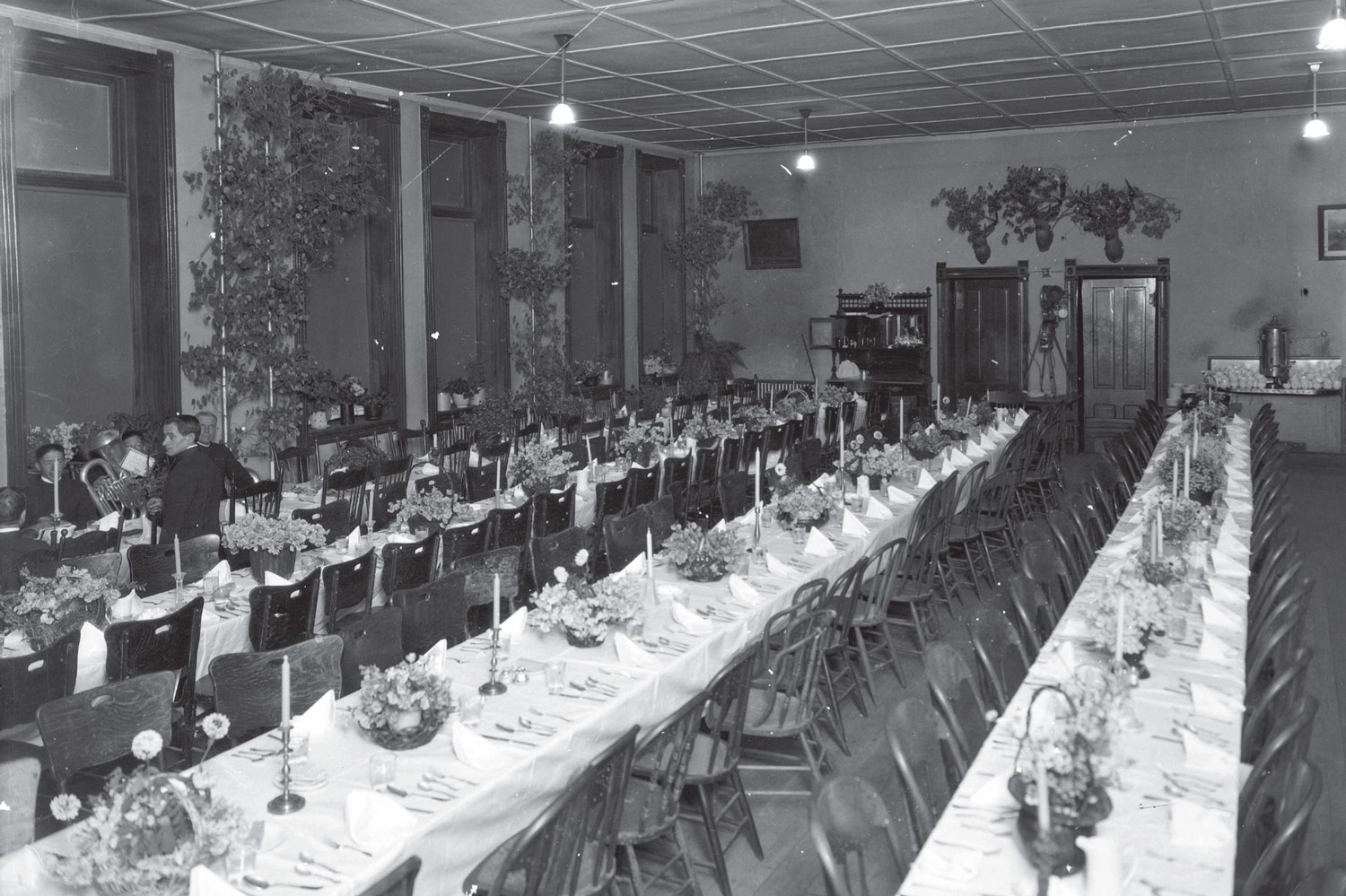Eat and Laugh, Laugh and Eat
Feasts and festivity at the Hotel Jerome
“If there is any one thing that the Aspen people like it is, ‘the big eats,’” claimed the Aspen Daily Times in a 1924 announcement for a public feast at the Hotel Jerome. Since opening its doors in 1889, the property has served as Aspen’s de facto banquet hall. From the mining era to the present day, revelers have flocked to the hotel’s well-appointed dining rooms to mark special occasions with a repast, toasts, music and dancing in the banquet tradition. A renovation in 1909 reestablished the hotel as a gathering space; manager/owner Mansor Elisha held banquets that were “up to snuff in every detail and equal to any that can be given by any hostelry in the state,” the Daily Times continued.
Annual fêtes at the hotel celebrated Aspen High School graduations and alumni reunions, while groups like the Eagles Club, Mountain Climbing Club and the Pitkin County Stock Growers Association hosted banquets as social events, and private banquets commemorated milestones like birthdays and farewell gatherings.
Few details were spared for a banquet’s multicourse meal, colloquially referred to as a “big feed” or “big feast.” A printed menu for the 1905 bachelor “toast and roast” of County Treasurer Billy McNichols featured “prime roast of beef with au jus, stuffed young turkey, fillet of veal with mushroom sauce, Neapolitan fruit, orange baskets, mashed potatoes, baked potatoes, stewed tomatoes, green peas, mince pie, lemon pie, plum duff with brandy sauce, vanilla ice cream, fruit cake, apples, grapes, mixed nuts and café noir.” In 1919, the city and county pooled funds to host a banquet to honor soldiers returned from WWI, promising “everything will be as free as the air we breathe” and “all we are going to do is to eat and laugh and laugh and eat.”
The Aspen community took pride in the first-rate banquets at the Jerome, indicators of “a growing confidence in the future for our little town.” If the hotel’s dining room walls could talk, they’d speak of “handsome decorations” of cut flowers on “crisp white linen,” spirited “toastmasters” who led the festivities and tables that “fairly groaned with all the delicacies the market affords.”
Edible Traditions is produced by the Aspen Historical Society. For access to the full online archives, including more than 10,000 historic images, visit AspenHistory.org or call 970.925.3721.





